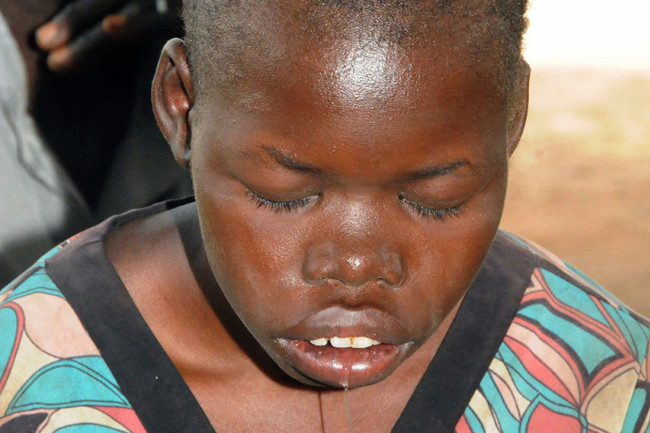
Over the years, outbreaks of the mysterious nodding syndrome, have appeared in South Sudan, northern Uganda, and Tanzania.
In the 1960s Dr Louise Jilek-Aall set up a clinic in the Mahenge highlands deep inside Tanzania. He soon began to notice a strange occurrence among members of the rural Wapogoro community in the area. Children in the tribe would present with repetitive episodes of head nodding; several times a day. These nodding seizures often occurred after eating or exposure to cold. Experts gave it the name, ‘the nodding syndrome’, while in Swahili it was named kifafa, meaning ‘the little death’.
The seizures resulted in children often sustaining serious injuries, due to falling in the river or the fire. Moreover, the affected children also experienced stunted growth, mental disability, and often suffered an early death. While the illness was widespread among members of Wapogoro community, it wasn’t present anywhere else in Tanzania.
It is, by all reports, a progressive disorder and a fatal disorder, perhaps with a duration of about three years or more. While a few children are said to have recovered from it, many have died from the illness. Seizures can also cause children to collapse, potentially causing injury or death
Dr. Peter Spencer, neurologist at Oregon Institute of Occupational Health Sciences.
However, in recent years the nodding syndrome has appeared in northern Uganda and South Sudan. In 2009, over 2,000 children in northern Uganda presented with the disease. The unavailability of healthcare in these regions has given rise to further outbreaks.
There is currently no cure for the disease and patients are generally given anticonvulsants such as phenobarbital.
Kifafa, The Little Death
The cause behind the disease is not known; however, experts have linked it to a parasitic worm, Onchocerca volvulus. Carried by the black fly, this particular parasite causes river blindness and is prevalent in all of the outbreak regions. Although a high percentage of children with the nodding syndrome had the parasitic infection, the parasite was also highly prevalent in areas where there was no nodding disease. Therefore, experts are unable to establish a link between the two.
Based on a 2018 study, researchers have also linked the syndrome to being a neurodegenerative disease. The study revealed that the brains of affected teenagers showed similar changes to those of patients with Parkinson’s and Alzheimer’s. Thus, causing researchers to conclude that the syndrome is a combination of epilepsy and symptoms of the two neurodegenerative diseases.
It’s generated a new line of enquiry because now we know that there is a certain type of brain damage occurring. You can think of it like this: if you can figure out what the type of brain damage is, maybe you’ll be able to work backwards to the cause.
Michael Pollanen, lead researcher of the 2018 study
The US Centre for Disease Control and Prevention (CDC) is also investigating the link between the syndrome and vitamin B6 deficiency. However, despite the multiple theories, one thing that’s clear is that it is not an inherited disorder. According to neurologist Dr Peter Spencer, the syndrome does not fit the pattern of a heritable genetic disorder.
As the cases continue to rise, researchers are on the run to solve the mystery of Kifafa.
Reference:
Wadman, M. African outbreak stumps experts. Nature 475, 148–149 (2011). https://doi.org/10.1038/475148a
Spencer, P S et al. “Nodding syndrome: origins and natural history of a longstanding epileptic disorder in sub-Saharan Africa.” African health sciences vol. 13,2 (2013): 176-82. doi:10.4314/ahs.v13i2.1



